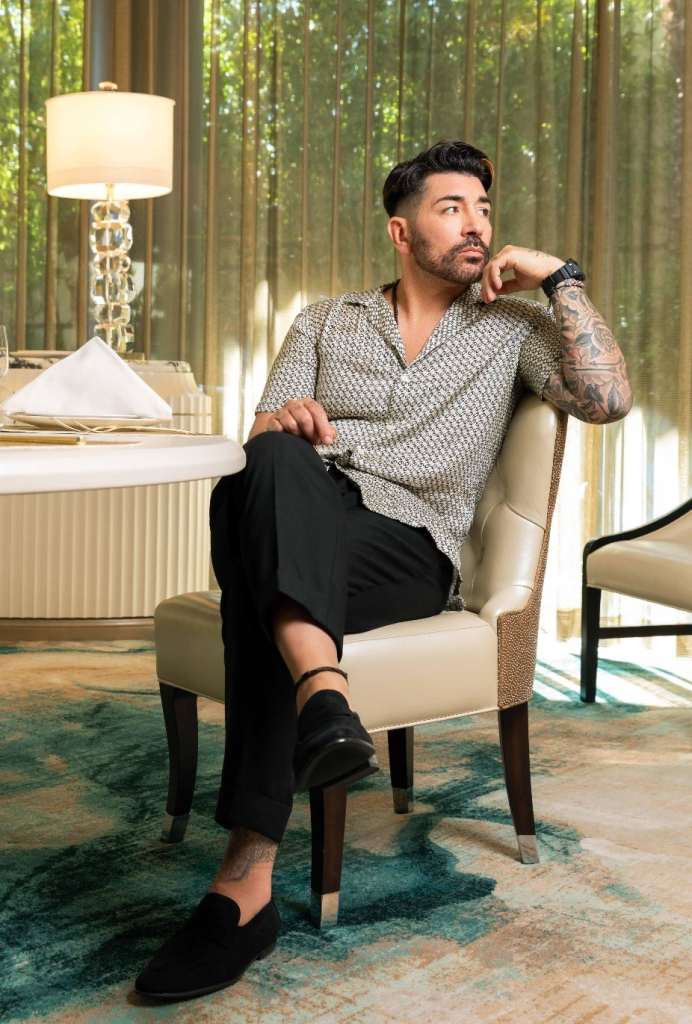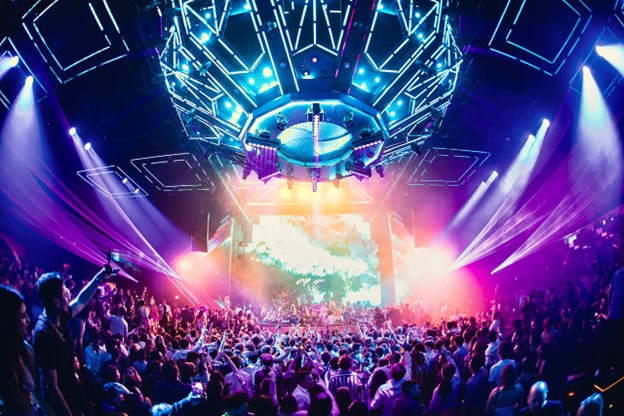
By Adam and Larry Mogelonsky
What can other hotels around the world learn from the thousand-plus-room resorts along the Las Vegas Strip? As an entertainment mecca, these gargantuan hotels reveal the growth of L&E alongside other non-room revenue verticals like F&B and spa.
Perhaps no other resort on The Strip epitomizes the need for strong L&E programming than Resorts World Las Vegas (RWLV). Launched during the pandemic, this 3,506-key property has had the uphill battle of competing against established players amidst ongoing travel uncertainties as well as cultivating the best possible lineup of talent, nightlife, and F&B outlets to provide consumers with a veritable ‘reason to visit’. Adding to these challenges, RWLV has partnered with Hilton Hotels and has to position its three different room products in ascending order: Hilton, Conrad and Crockfords (also marketed as part of Hilton’s LXR Hotels & Resorts brand).
All this hinges on raising awareness and marketing to feed the sales funnel across all segments. And with a property this large and this multifaceted, it requires a clear vision and strategic approach to handle marketing successfully.
For this, we interviewed Ronn Niccoli, Chief Marketing Officer for RWLV, to learn about his approach to managing an operation of this magnitude, how L&E has become an integral part of the revenue mix and what he’s done to craft a new casino resort brand in a crowded market. In a few short years, the RWLV marketing team has turned the resort’s brand into ostensibly the entertainment capital of The Strip for it to stand apart from the pack. Let’s see how Mr. Niccoli has done just that.

I moved to Las Vegas from Youngstown, Ohio and found myself getting a job as a street team promoter for Wynn Nightlife. I had previously earned a degree in marketing and approached nightlife with a serious business mindset from the start. I then made a seamless transition from a nightlife focus to a property focus as I transitioned from Vice President of Lifestyle Marketing and Vice President of Zouk Las Vegas to the Chief Marketing Officer of Resorts World Las Vegas (RWLV).
My involvement in the building and opening of RWLV was key to getting the new property (66 floors) off the ground. Opening a new resort in Vegas is never easy, especially opening the first ground-up casino in over a decade and within a newer world of marketing and consumer behavior. Since RWLV opened in June 2021, we launched a refreshed brand campaign ‘Rule the World’ which has had a massive impact on branding and marketing the property. RWLV has become a known name to Vegas enthusiasts everywhere and a frequented destination for many influential hospitality and thought leaders.
Building on this, how has the revenue mix for Las Vegas casino resorts changed over the past two decades? What are some of the forces that are making both L&E, F&B and spa critical nowadays versus only gaming?
Vegas continues to evolve as it always has. In 2002, gaming revenue on the strip allocated just 42% of revenue versus 2012 that number went down to 36%, and in 2022 it was at 29%. The new Vegas consumer is looking for an array of experiences that include more than gaming. Elements of entertainment, culinary arts and lifestyle amenities like the spa have become more prevalent in spending. The development of the Strip has also contributed to that as newer builds have transitioned from casino properties to casino hotels with other offerings on the property.
The gaming element is always part of the allure of coming to Vegas, but as other domestic cities have started opening up casinos Vegas must continue to innovate and elevate its level of hospitality to evolve with our consumers and to surpass the competition.
In your own words, what makes RWLV such a unique place for guests to stay?
RWLV embodies the definition of modern luxury. It’s approachable, and not intimidating; it has life and energy, along with a high level of hospitality and service. Underlying all that is a palpable feeling of human inclusion. It’s the type of place to celebrate an occasion, a weekend away or to come out to The Strip for a locals-only experience – something that is often lost amidst the pursuit for tourists.
With so many different operations and target customer segments, guiding the marketing for a property like RWLV is like steering an aircraft carrier. What’s your approach when deciding where to focus your attention and that of your team’s resources?
This is very tough because we all run into the challenges of budget, resources and audience segmentation. For the first true year of operation, our goal was purely domestic. We then wanted to expand further into Canada and Mexico, so North America became the next big push for year two. As we continue to raise our brand awareness, South America, Europe and the Middle East are next on the radar. The true goal is to be in a position at year five or six of operation where we have an efficient, effective, and truly global awareness of RWLV’s brand identity. We want to grow into the position where a consumer can understand with simple messaging that we are a modern luxury and are the entertainment capital of The Strip.
RWLV has three different hotel brands: Hilton, Conrad and Crockfords. How do you differentiate each of these three hotel products in terms of branding, positioning and awareness?
Technically we’re still in our infancy as our domestic brand for RWLV. Having the three other brands creates consumer confusion regarding different options and price points. With Hilton as a 4-star, Conrad as a 4.5-star and Crockfords as a 5-star, tiering up requires a concerted effort to distinguish the experiential elements to support the price points at each.
RWLV has become renowned as the best resort on The Strip for entertainment, which has required extensive marketing campaigns to reinforce this branding. What was the strategy behind this direction and what were the key steps in bringing this recognition to life?
The first kind of messaging that we went out to consumers was based on entertainment, which has become a perennial focus and pillar for RWLV. It was easy to communicate at a time when we didn’t have a live and active resort because we were marketing during preopening. It then evolved into a partnership where the artists became ambassadors of the brand, which has helped us through the opening and to become who we are today. Strategically, from the outset this direction has cemented us with the consumer as being one of the best entertainment properties in the world. Entertainment is continually changing, especially with artists from touring, releasing music and in general, so we’re actively talking with our ambassadors to support their artistry as well as evolve our marketing strategy.
What’s in the near future for Las Vegas in terms of a further evolution of the revenue mix, marketing channel mix and demographic shifts?
Events like F1 (in mid-November 2023) are reshaping the global perception of Las Vegas to maintain its appeal amongst consumers worldwide. Next up, the Super Bowl in February 2024 is perhaps the final step in cementing Vegas as a sports entertainment city. This is something that no one could’ve predicted two decades ago, least of all when I was just getting started. Some of the core conventions that are looking to grow in size and popularity continue to attract the business consumer. With the Sphere opening and other festivals finding their home in Las Vegas, we’ve maintained the city as an entertainment capital of the world, and there will be a lot of work for RWLV to make sure we keep pace with this rapidly growing market.


